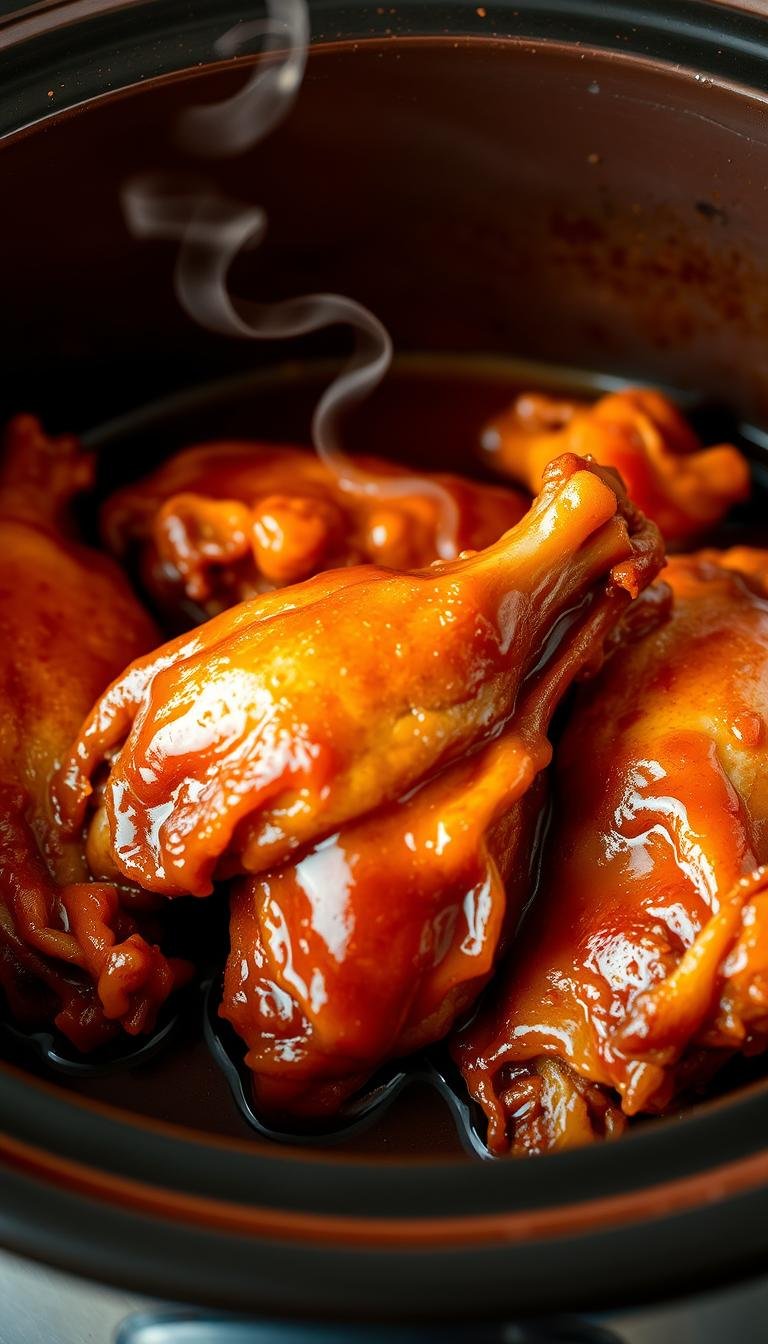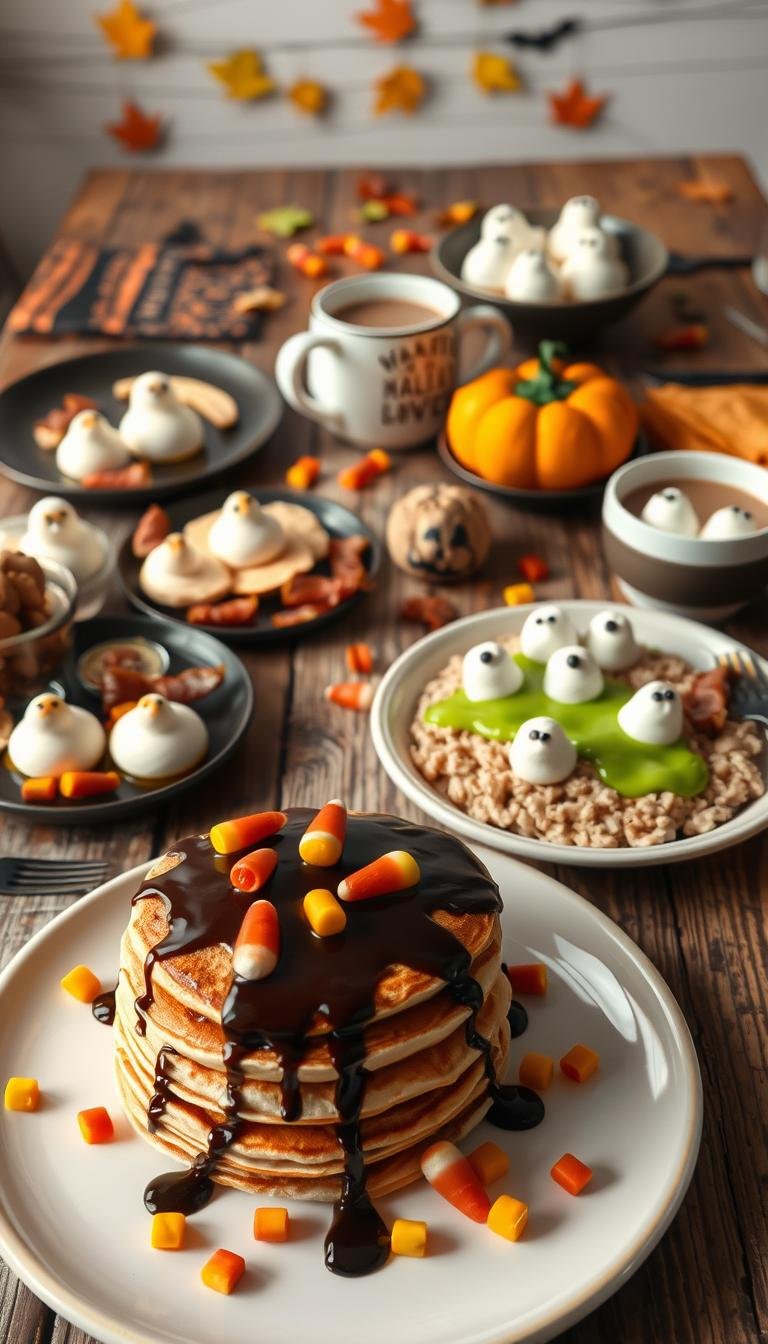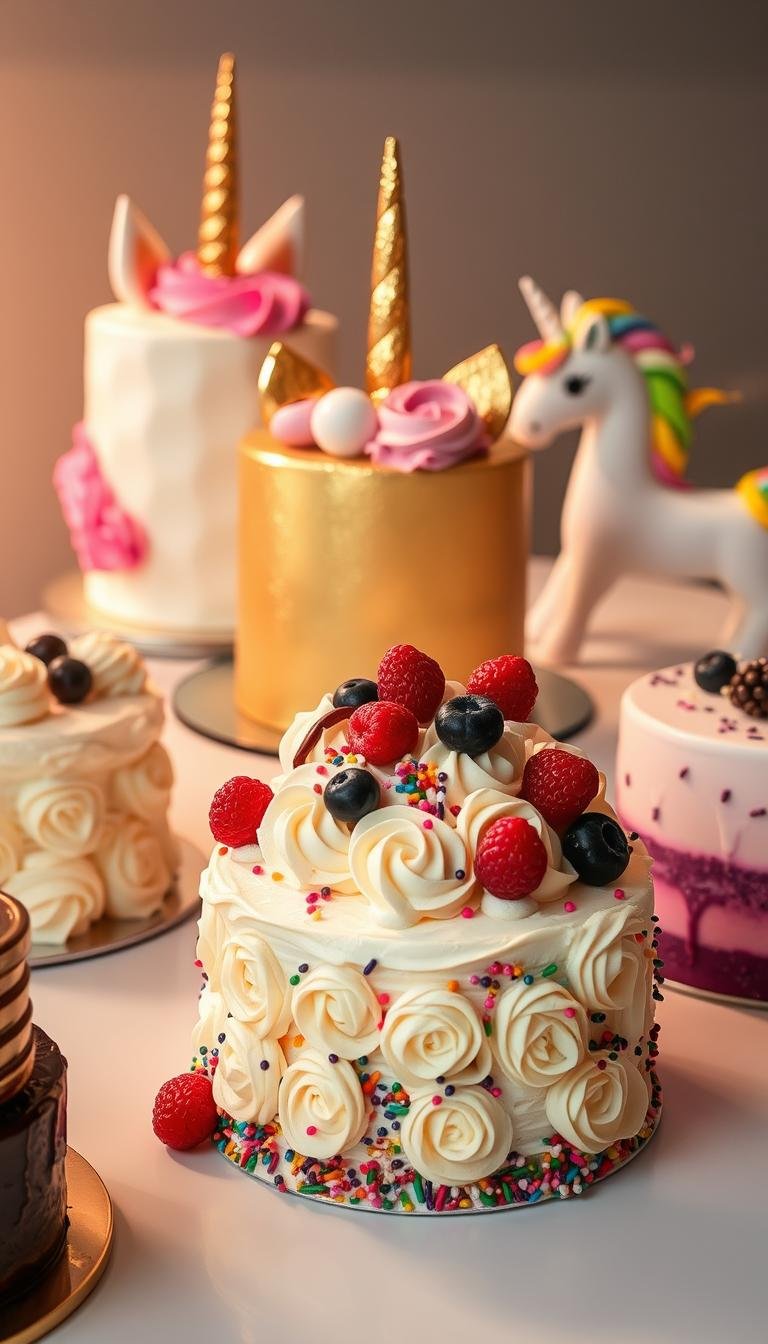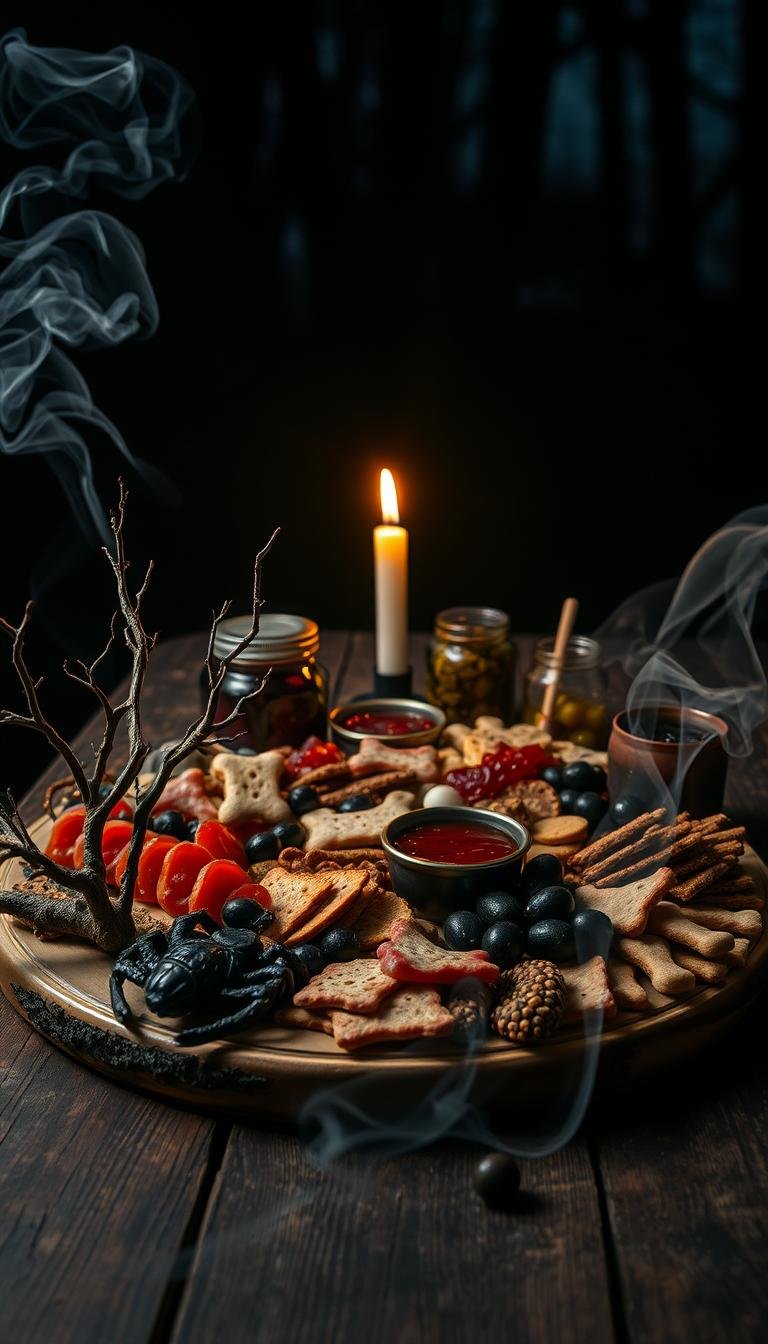Chocolate Cake Recipe Easy: Quick Homemade Dessert
Surprising fact: more than 40% of home bakers say a one-bowl approach makes them actually bake more often.
This guide introduces a fast, friendly dessert that delivers big flavor with minimal cleanup. The one-bowl, no-mixer method uses common pantry staples like all-purpose flour, sugar, cocoa powder, eggs, milk or buttermilk, oil, and boiling water to bloom flavor.
The result is a moist crumb with deep cocoa notes and flexible frosting options — from silky ganache to chocolate buttercream. Gentle mixing, accurate measuring, and a 350°F bake for about 20–35 minutes give consistent results across single layers, cupcakes, or a 9×13 sheet.
Why home cooks love it: start-to-finish time is often under an hour, it scales well, and storage is simple — room temperature under a dome, refrigerated covered, or frozen wrapped for 1–2 months.
Key Takeaways
- One-bowl method saves time and dishes while delivering bakery-style texture.
- Hot water blooms cocoa for deeper flavor and a silky crumb.
- Gentle mixing and accurate measuring are crucial for moist results.
- Adaptable for layers, cupcakes, or sheet pans and many dietary swaps.
- Cool fully before frosting; bake until a toothpick shows moist crumbs.
Why This Easy Chocolate Cake Works Right Now
A streamlined, one bowl approach gives busy cooks a fast path from whisk to oven without special tools.
This method relies on pantry-first ingredients and a simple technique: whisk dry, add wet, then finish with hot water to bloom the cocoa. That bloom boosts deep flavor while oil keeps the crumb moist.
Speed matters: many batches go into a 350°F oven and finish in about 20–35 minutes, so the total time fits weeknights and last-minute celebrations.
- Minimal tools — just a bowl and whisk — mean fewer dishes and quick cleanup.
- Gentle mixing prevents tough gluten and preserves a tender, fudgy texture.
- Flexible finish: choose glossy ganache or classic buttercream to match the event.
Tested at-home methods and balanced leavening deliver consistent results. For a reliable, crowd-pleasing outcome, this recipe often ranks among the best chocolate cake options when you want great flavor without fuss.
chocolate cake recipe easy: The One-Bowl, No-Mixer Method
Whisk dry ingredients in a single bowl, then add the wet mix and finish with a cup of boiling water to bloom the cocoa. This order unlocks deeper flavor without extra tools.
Blooming cocoa with boiling water for deeper chocolate
Bloom the cocoa by stirring cocoa powder with hot liquid (add instant coffee or espresso powder if you like). The hot step intensifies aroma and gives a fuller taste in the finished cake.
Stir, don’t whip: gentle mixing for a tender crumb
Stirring gently keeps gluten from overdeveloping and preserves a soft crumb. Use a flexible spatula to scrape the sides and fold until just combined.
- Start in one bowl and whisk dry items first to spread leaveners evenly.
- Incorporate the hot bloom last; expect a thinner cake batter — that yield is normal.
- Keep mixing slow and steady; the goal is combined, not fluffy.
Ingredients You’ll Need (Pantry Staples Only)
Gathering a short list of pantry staples makes this batch-ready approach stress-free.
Dry essentials
Use all-purpose flour for structure and granulated sugar for sweetness. Add unsweetened cocoa powder for depth, plus baking powder, baking soda, and salt for lift and balance.
Wet staples
Combine eggs with milk or buttermilk to tenderize the crumb. A neutral vegetable oil keeps the loaf moist, and a splash of vanilla adds warmth.
Flavor boosters
Optional espresso or instant coffee powder will intensify chocolate without adding a coffee taste. Choose Dutch-process or natural cocoa depending on the desired flavor profile.
- Tip: Check baking powder and baking soda dates for reliable rise.
- Use gram weights for accuracy (e.g., ~240 g flour, 396 g sugar, 63 g cocoa).
- Swap milk for plant milks or make quick buttermilk by adding vinegar to milk.
| Ingredient | Role | Common Swap |
|---|---|---|
| Flour | Structure | Gluten-free mix (adjust liquids) |
| Sugar | Sweetness & crumb | Brown sugar for more moisture |
| Cocoa powder | Flavor & color | Dutch-process or natural |
| Vegetable oil | Moisture | Melted coconut oil |
Keep this shopping list handy: these ingredients mean you can bake a reliable chocolate cake from pantry staples with no last‑minute runs.
Tools and Prep: Set Up for Success
Set up your station: the right pans and a clean bowl make baking smoother. A little prep reduces mistakes and speeds the process.
9-inch pans, parchment, and a large mixing bowl
Grease two 9-inch cake pans and line the bottoms with parchment circles for easy release and neat edges. Use baking spray, butter and flour, or both.
Preheat the oven to 350°F so the batter hits a fully heated environment. Cool the layers in the pan for about ten minutes, then turn out onto racks to finish cooling.
“Prepare your tools before you mix; it keeps the bake calm and predictable.”
- Keep a whisk and a large mixing bowl on hand—no mixer required for this one-bowl method.
- Have a flexible spatula to scrape sides and move batter into each pan cleanly.
- Weigh dry ingredients when possible; otherwise fluff and level cups for consistent results.
- Sift cocoa to avoid streaks in the crumb and set out cooling racks in advance.
- Clear counter space and arrange wet, dry, and bloom ingredients in easy reach.
| Tool | Purpose | Quick Tip |
|---|---|---|
| 9-inch cake pans | Even layers | Grease, then line with parchment |
| Large mixing bowl | Mix everything in one place | Use room-temperature ingredients for even mixing |
| Whisk & spatula | Combine and fold | Stir gently—avoid overmixing |
| Cooling rack | Finish cooling off the pan | Turn out after 10 minutes in pan |
Final prep: have a knife or offset spatula ready to level tops before frosting. These small steps save time and protect your ingredients.
Step-by-Step: From Bowl to Oven in Minutes
Set a relaxed pace: in just a few minutes you can move from a bowl of dry ingredients to a thin, pourable batter ready for the oven.
Whisk, combine, then bloom the cocoa
Whisk flour, sugar, cocoa, baking powder, baking soda, and salt until uniform with no streaks. Stir in eggs, milk or buttermilk, oil, and vanilla gently—aim for combined, not whipped.
Bloom the cocoa by stirring it into a cup of boiling water. Add a pinch of instant coffee if you want extra depth. Fold the hot bloom into the batter; it will be thin and pourable.
Pour, bake, and watch the center
Divide the batter evenly between two greased 9-inch pans so layers bake at the same rate. Bake at 350°F for about 20–35 minutes, depending on thickness.
“Bake until a tester shows light, moist crumbs in the center—no wet batter.”
- Rotate pans mid-bake if your oven runs hot on one side.
- Expect a pourable batter that levels itself in the pans.
- Timing can vary by pan and oven; check toward the end of the window.
Cool 10 minutes in pan, then cool completely before frosting
Let the pans rest on a rack for 10 minutes to set the structure. Turn layers out and let them cool completely before frosting to avoid melting or sliding.
Tip: chilling layers slightly makes trimming and stacking easier when you finish this baking step of the recipe.
Baking Tips for the Best Chocolate Cake Texture
Consistent texture comes down to three things: measurement, temperature, and timing. These practical steps help you get even rise, a tender crumb, and predictable results every time.

Measure by weight and sift cocoa
Weigh flour and sugar when possible for repeatable results. If you must use cups, fluff and level to avoid packing the dry ingredients.
Always sift cocoa powder to remove lumps that can create bitter pockets or streaks in the crumb. Check dates on baking powder and baking soda so the rise is reliable.
Room temperature ingredients and fresh leaveners
Bring eggs and milk to room temperature so the batter emulsifies and bakes evenly. A proper ingredient temperature helps the batter set at the right pace.
Fresh leaveners matter: stale baking powder or baking soda leads to low rise and dense texture. Replace them yearly for best results.
Toothpick test: look for light, moist crumbs in the center
Start testing near the lower end of the bake window. Insert a toothpick in the center—you want light, moist crumbs, not wet batter or a dry stick.
Let layers cool 10–15 minutes in the pan before unmolding so residual heat finishes the bake and protects the crumb.
- Mix gently and stop when uniform to avoid a tough cake.
- If edges brown too fast, use lighter pans or rotate to even out hot spots.
- A quick peek is fine, but avoid opening the oven often to keep temperature steady.
Frosting Options: Ganache vs. Chocolate Buttercream
Decide whether you want a mirror-like gloss or a soft, pipeable topping. Both finish styles pair beautifully with the rich layer and change how you decorate.
Shiny ganache: cream + chopped chocolate for a sleek finish
For a glossy finish, heat heavy cream to just below a simmer and pour over finely chopped chocolate in a bowl. Let it rest for 5 minutes, then whisk until smooth and glossy.
Use equal parts cream and chopped chocolate (one cup each for a pourable glaze) or cool longer for a spreadable layer. Chill briefly to thicken or use a spoon to drizzle for a dramatic drip.
Fluffy chocolate buttercream: classic, pipeable, crowd-pleasing
Beat softened butter with powdered sugar, a bit of cocoa, and a splash of milk until light and airy. This chocolate buttercream holds shapes and is ideal for borders and swirls.
Add a pinch of espresso powder to either finish to intensify flavor without tasting like coffee.
- Tip: Mix ganache or buttercream to desired sheen and stability.
- Use an offset spatula for smooth sides and a bench scraper for clean edges.
- For bakery drama, pipe buttercream and add a ganache drip on top.
- Store frosted layers covered; keep ganache set at cool room temperature or refrigerate if your kitchen is warm.
Variations and Swaps to Fit Your Pantry
This section shows pantry-friendly swaps so you can bake confidently with what you have. Small changes keep texture and rise steady while matching diets or ingredient limits.
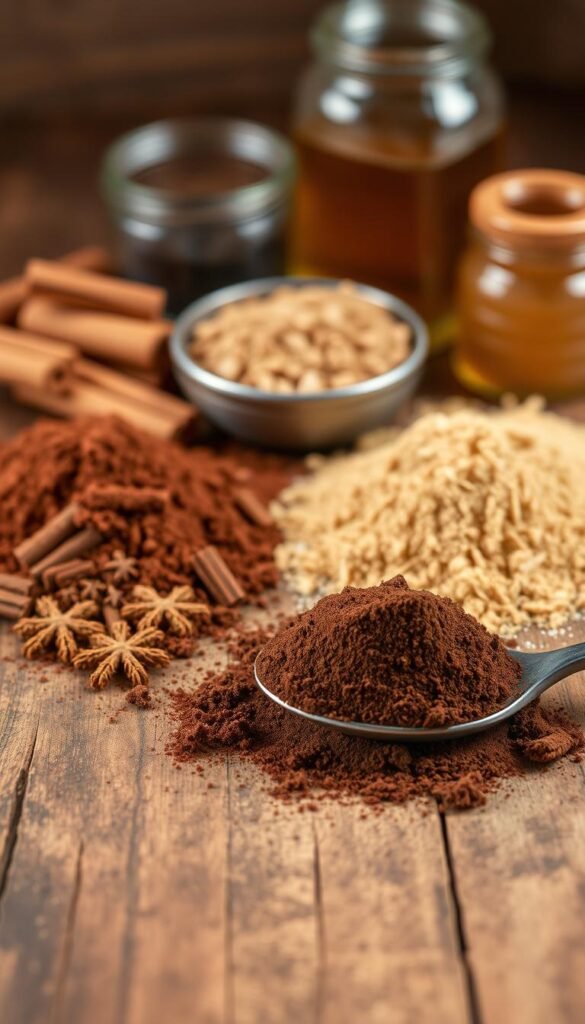
Gluten-free, dairy-free, and egg-free options
Use a 1:1 gluten-free flour blend in place of all-purpose flour for an easy gluten-free swap. For dairy-free, swap whole milk with almond, oat, or coconut milk; the layers stay moist.
Replace eggs with 2/3 cup unsweetened applesauce or a flax egg (1 tbsp ground flax + 3 tbsp water). Expect a slightly longer bake time when eggs are omitted.
Fat and cocoa choices
Choose neutral oil like vegetable or canola for reliable moisture. Melted butter adds richness but gives a denser crumb.
Cocoa and cocoa powder swaps: Dutch-process yields smoother, deeper flavor; natural powder works with baking soda adjusted for acidity.
- Add a pinch of espresso powder to boost chocolate depth without making it taste like coffee.
- Make quick buttermilk by stirring 1 tbsp vinegar or lemon juice into 1 cup milk; rest 5 minutes.
- Adjust salt and leaveners when changing brands to keep rise consistent.
| Swap | Use | Notes |
|---|---|---|
| 1:1 GF flour | All-purpose flour | Use same weight; add xanthan if blend lacks it |
| Almond/oat milk | Whole milk | Works well for dairy-free, keeps crumb tender |
| Applesauce / flax egg | Eggs | Extend bake slightly; reduces rise a bit |
| Melted butter | Neutral oil | Richer flavor, firmer crumb |
“Keep notes on swaps so you can repeat the variations you like best.”
Batch Sizes and Pans: Cupcakes, Layers, and Sheet Cakes
Choose the right pan size and baking depth to match your event and serving needs.
Common formats: two 9-inch rounds make a classic layer celebration. A single 9-inch round is perfect for a quick dessert dressed with ganache or buttercream.
For larger gatherings, a 9×13-inch sheet feeds a crowd and slices neatly for parties. Cupcakes use the same one-bowl batter; check them at about 16–20 minutes.
Bake time varies by batter depth and pan material. A single 9-inch often needs 20–25 minutes; two 9-inch layers take about 30–35 minutes. Use the toothpick test for doneness.
- Line pans and cake pans with parchment for easy release.
- Double the batch for more cakes, but fold gently in the bowl to keep texture light.
- Weigh batter into each pan or cup to keep layer thickness consistent.
- For tall layers, add a parchment collar to encourage even rise.
- Cool completely before filling or stacking to prevent slipping layers.
“Smaller pans change bake times more than you expect—test early and often near the end.”
Make Ahead, Storage, and Freezing
Plan storage early so your layers stay tender and ready when guests arrive.
Short-term storage: cool completely before covering. Store at room temperature under a dome for 2–3 days to keep crumb soft and flavors bright.
If you need longer shelf life, refrigerate covered for up to about a week. Bring refrigerated cakes back toward room temperature before serving so frostings and cream regain their ideal texture.
Freeze and thaw for stress-free baking
Freeze unfrosted layers wrapped tightly in plastic and foil, or place in a freezer bag for 1–2 months. Label with the date and pan size for easy assembly later.
Thaw frozen layers in the refrigerator overnight while still wrapped. After thawing, bring the layers to room temperature before applying frosting so the topping adheres and sets smoothly.
Quick tips for assembly day
- Let layers cool completely before wrapping to avoid condensation and soggy tops.
- For make-ahead events, bake layers 1–2 days early and frost the day of serving.
- If using ganache or cream-based fillings, allow time at a cool room temperature to set, or chill briefly if the kitchen is warm.
- When frosting, work at room temperature so buttercream spreads cleanly and ganache won’t slide.
| Storage | Time | Best use |
|---|---|---|
| Room temperature, covered | 2–3 days | Short-term serving |
| Refrigerated, covered | Up to 1 week | Longer freshness for filled layers |
| Frozen, wrapped | 1–2 months | Make-ahead baking and storage |
“Cool fully, wrap well, and bring back to room temperature before frosting for the best finish.”
Conclusion
, One-bowl simplicity and pantry staples make this the go-to approach for the best chocolate cake you can bake at home. The method saves time and dishes so you can move from bowl to oven in just a few minutes.
Blooming cocoa and gentle mixing produce a rich, moist crumb that pairs with glossy ganache or fluffy chocolate buttercream. This flexible formula scales to single layers, tall stacks, cupcakes, or a 9×13 sheet without fuss.
Measure carefully, sift cocoa, and use the toothpick test for consistent success. Store layers at room temperature or freeze wrapped for make-ahead planning.
Try a pinch of espresso powder to lift the flavor, and keep notes on tweaks so your personal cake recipe gets even better over time. Confident baking starts with this streamlined method that reliably delivers bakery-level results.


